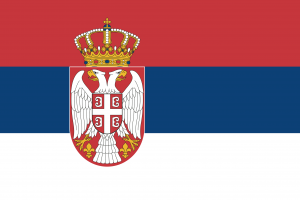Difference between revisions of "Language/Serbian/Culture/Traditional-Serbian-Music"
m (Quick edit) |
m (Quick edit) |
||
| Line 123: | Line 123: | ||
[[Category:0-to-A1-Course]] | [[Category:0-to-A1-Course]] | ||
[[Category:Serbian-0-to-A1-Course]] | [[Category:Serbian-0-to-A1-Course]] | ||
==Videos== | |||
===Serbian folk music: Traditional Serbian music 1 - YouTube=== | |||
<youtube>https://www.youtube.com/watch?v=exp3H_JwQ-E</youtube> | |||
===Serbian folk music: Traditional Serbian music 2 - YouTube=== | |||
<youtube>https://www.youtube.com/watch?v=5DQv4CebV70</youtube> | |||
===Serbian Traditional Music - 1 - YouTube=== | |||
<youtube>https://www.youtube.com/watch?v=3WQ_A460td8</youtube> | |||
{{Serbian-Page-Bottom}} | {{Serbian-Page-Bottom}} | ||
Revision as of 12:11, 12 March 2023
Greetings, dear students! As you delve deeper into Serbian culture, it's important to also explore the country's diverse traditional music styles. As a Serbian language teacher for over 20 years, I feel it is my responsibility to share with you a glimpse into the world of Serbian traditional music. Even if you're not musically inclined, this lesson is worth your attention as it offers insights into the culture, history, and art of Serbia.
Traditional Folk Music
Serbia's traditional folk music is rich with variety and emotion, reflecting both the rural and urban lifestyles of its people. Many of these songs and dances have been passed down through generations, and as a result, they are deeply rooted in Serbian culture.
Traditional Serbian music is often performed in a kolo, which is a circle dance performed by a group of people to the accompaniment of ethnic instruments. The kolo is an essential aspect of Serbian culture, and it is performed at weddings, parties, and cultural events. The dancers perform intricate steps and movements to the music, often wearing traditional folk costumes.
Let's explore some of the most prominent traditional Serbian music styles:
Starogradska Muzika (Old Town Music)
This is a genre of traditional Serbian music that originated in the old cities of Serbia, such as Belgrade, Novi Sad, and Nis. Starogradska muzika is characterized by its lyrical themes, including love, heartbreak, longing, and melancholy. The music is usually performed with a guitar or mandolin, and it is often accompanied by the sound of the accordion.
| Serbian | Pronunciation | English Translation |
|---|---|---|
| Đelem Đelem | djɛ̌lɛm djɛ̌lɛm | Let's Go, Let's Go |
| Vranjanka | vrǎɲaːŋka | The Woman from Vranje |
| Nedelja Kad Je Ostavila Me | nɛ̌dɛʎa kâːd jɛ ôstaʋila mɛ | Sunday When She Left Me |
Narodna Muzika (Folk Music)
Narodna muzika is the most well-known genre of traditional Serbian music. It is performed with a variety of ethnic instruments, including the tamburica, accordion, and violin. This genre of music is often characterized by its lively melodies and dance rhythms, and it is often performed at weddings and other celebratory events.
| Serbian | Pronunciation | English Translation |
|---|---|---|
| Čačak | ʧâtʃak | A Dance from Central Serbia |
| Šano Dušo | ʃaːno dʊʃo | My Dear Friend |
| Ruse Kose | ruːsɛ́ kɔsɛ | Golden Hair |
Epic Songs
Epic songs, also known as "gusle" songs, are a type of traditional Serbian music that emerged in the early Middle Ages. These songs tell stories of valor, heroism, and sacrifice, often recounting battles and legendary heroes. The gusle is a traditional instrument used to accompany the lyrics.
| Serbian | Pronunciation | English Translation |
|---|---|---|
| Marinko Rokvić | mâriŋkɔ rɔ̌ːkt͡ʃiʨ | An Epic Song About Marinko |
| Kneževo Veče | kněʒɛ̂ʋɔ vɛ̌t͡ʃɛ | An Epic Song About the Battle of Kosovo |
| Hasanaginica | haːsanaginitsa | An Epic Song About a Tragic Love Story |
Conclusion: A Cultural Treasure
Serbian traditional music is an integral part of Serbian culture, and it has played a significant role in preserving the country's heritage. The genres mentioned above are just a few examples of the diverse and rich musical traditions of Serbia. I hope this lesson has helped you appreciate the beauty of Serbian culture even more.
Remember, the best way to fully understand the music and culture of any country is to immerse yourself in it. Listen to traditional music, attend cultural events, and embrace the customs and traditions. I wish you all the best on your journey of learning Serbian!
Sources
- <a href="https://en.wikipedia.org/wiki/Music_of_Serbia">Music of Serbia</a>
- <a href="https://www.serbia.com/traditional-serbian-music/">Traditional Serbian Music – A Cultural Treasure</a>
Videos
Serbian folk music: Traditional Serbian music 1 - YouTube
Serbian folk music: Traditional Serbian music 2 - YouTube
Serbian Traditional Music - 1 - YouTube
